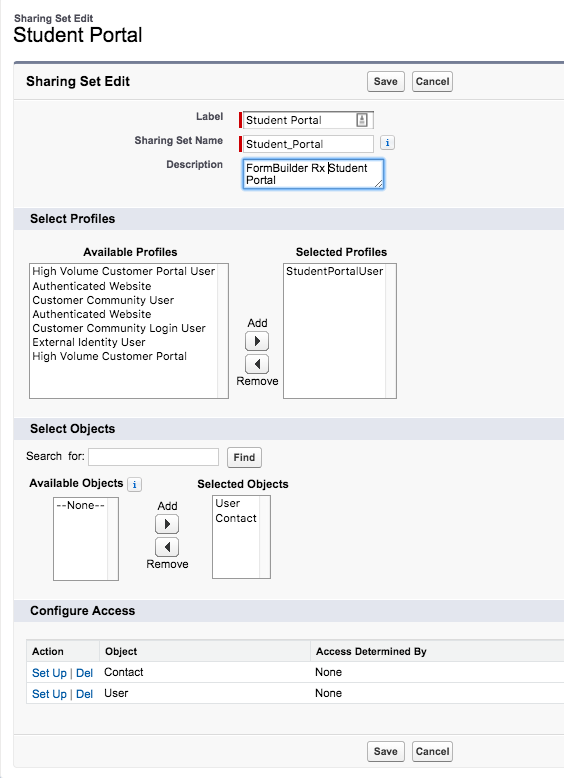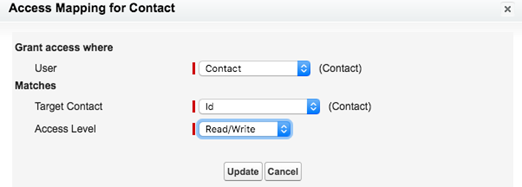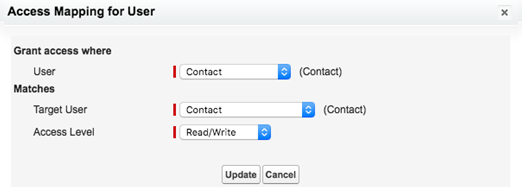Create a Profile/Sharing Set for Community Users
Overview
Create a custom profile for your community users by searching Setup for "Profiles" in the Quick Find box. Clone the profile that matches the license type you will be using for your community users (usually the Customer Community Login User profile, but if you are not sure, check with your Implementation Consultant or Salesforce Account Executive to determine the license type you will be using). Name the new profile and save it. You will need to use this profile in the next step, when you create a Salesforce Community.
Set Up Profile Permissions
| Permissions | Details |
|---|---|
| Read, Create, Edit Object | Grant on all fields of Contact and, if you have ERX Core installed, Application |
| Field-Level Security Edit Access and Read Access | Grant on all fields of Contact and, if you have ERX Core installed, Application |
| Custom Object Permissions Read and View All | Grant on these custom objects:
Note:
New versions of FormBuilder Rx will contain new, additional
fields that the community user will need access to. After each upgrade,
be sure to visit the Release Notes for instructions. |
| If you have ERX Core installed, grant partial permissions (Read, Create, Edit, Delete) on these custom objects as well as Field-Level Security Read Access and Edit Access on all their fields. |
Custom objects:
|
| Custom Object Permissions: Combinations as-needed of Read/Create/Edit/Delete permissions and Field-Level Security: Read/Edit Access permissions on the objects/fields that you are going to expose to your community users. | If you are going to put fields from the Application object on a page, and the organization-wide sharing setting for the Application object is set to Private, then the profile must be given access to the records they will be updating via a Sharing Set. |
Configure the Password Policies
- Choose how often passwords will expire and how long and complex passwords must be
- Make sure these password policies match those configured for the Community Site Guest user, since the “Password complexity requirement” of the Site Guest User Profile will determine which passwords are acceptable at the time of registration.
Create a Sharing Set
For those objects exposed in the Community that have a Sharing Setting organization-wide default of Private, a Sharing Set is needed to give community users access to any (“Private”) record associated with an account or contact that matches the user’s account or contact (see Salesforce documentation on Sharing Sets for more detail).
- Check if you need a Sharing Set:
- Go to
- Examine the organization-wide defaults for Account and Contract and Contact (and also Application if you have ERX Core installed). If any of these is set to Private, then you'll need to create a community Sharing Set.
- Create a Sharing Set if needed — this example assumes that the
organization-wide default for the Contact object is Private:
- Click and scroll down to related list of Sharing Sets
- Click New to open the Sharing Set Edit dialog

- Configure the Sharing Set, as shown above:
- Select the Profile created for your community
- Select the objects that your community users will need to read and edit,
click “Set Up” for each one and configure their Access Mappings to
establish a relationship between the User and the records to which the
User should have access, like this:


You can give your community users access to other objects whose organization-wide default is set to Private, but only if they have a lookup to Account or Contact. For guidance on configuring Access Mappings for other objects consult the Salesforce documentation on Sharing Sets.

